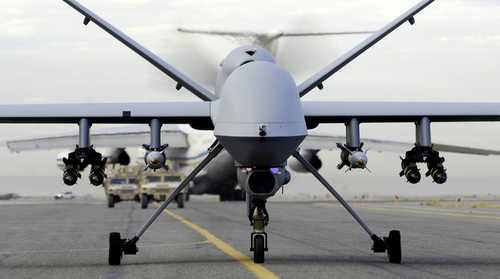Autonomous weapons, who pulls the trigger?
In this section, we will have a closer look at autonomous weapons, the controversies and policy recommendations to deliberately design moral and causal responsibility to human parties.
Robotic weapons currently in use range from RPAS (Remotely Piloted Aircraft Systems), commonly referred to as ‘drones’, which are controlled by a human operator, to robots used to monitor border posts in the Korean Demilitarized Zone. Their use is increasing in militaries around the world, as is research into new systems. With more funding and new technologies, confusion and controversy are only likely to grow.
Drones can carry out all sort of tasks without human intervention. Of course, there are definite benefits: human lives (of soldiers or others) need not be put in dangerous places or situations if drones can achieve the same outcome. On the other hand, there are also some risks. More importantly, there are serious ethical concerns!
To quote Prof. Alex Leveringhaus (TU Delft/Oxford), expert in this field: 'It is clear that robotic weapons are here to stay, and that they will play a growing role in future armed conflicts. There is now an urgent need for states, the military and manufacturers to work together to respond to justified legal and moral concerns.'
